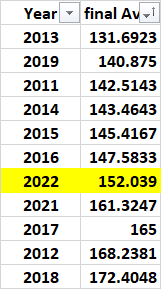OK, so I went and did something today that I typically try to avoid -- I posed a speculative statistical opinion about Colorado Basketball without actually doing the research.
My tweet:
"[...] Tennessee aside (#9 in KP last year), this may be the softest non-con schedule Tad has put together while at CU. No judgment, it's hard to build a schedule, and a 20-game P12 slate leads you in this direction, but yo. Utah-esque."Normally, I'd have actually looked at some records and some stats before positing something like that. Today? No, not so much. That's my bad.
The Context
Wait, what is an MTE?
MTEs, or Multi-Team-Events, allow coaches to add in a non-conference tournament or similar to supplement their schedules. Often taking place in far-flung exotic locales (like Hawai'i, Puerto Rico, or the Bahamas), they're exceedingly common place, and rare is the major program's schedule that doesn't include one (Colorado's last season without an MTE was 2013-14).
Normally, NCAA rules limit a college schedule to 29 regular season games (plus exhibitions, either public or private). However, by including a three-game MTE in your schedule, you can cram in a maximum of 31 games. It comes at a cost, though: you're at the mercy of the MTE for your opponents, the bracket, etc.
This year's example for Colorado is the Myrtle Beach Invitational (tickets on sale now!), which I will be attending in mid-November.
I thought the quickest and fairest way to quantify the difficulty of a given year's schedule was to average the *previous* year's final KenPom ranking of each team on the slate. i.e., if I was looking at the 2013-14 season's schedule, I would compare it against the final KP rankings from 2012-13.
The Results
Well, long story short, I should've looked at the data, first, before saying something stupid -- let that be a lesson to all of you! While the 2022 non-conference schedule doesn't shape up to be the strongest of the Tad Boyle era, it certainly isn't the worst. See below:
Woof, 2018 was awful. That was a year bereft of any high-major teams in the non-conference slate. Other than CSU, the home headliner that year was... I guess Drake? Even the MTE that year was a bust, with CU going 1-2 against a middling group of Indiana State, Hawai'i, and Charlotte. The less said of that the better.
2013, on the other hand, was interestingly the only year that CU didn't schedule a full MTE. Tad made up for that with a pair of high-profile neutral site one-off games -- Against Baylor in Dallas and Oklahoma State in Las Vegas -- which combined nicely with the home tilt against Kansas (Ski for 3) to beef up the numbers.
Ultimately, 2022 is pretty much middle-of-the-road. Lacking a home marquee event, sure, but otherwise on par with what we've seen, historically. It's also solidly *stronger* than last season's, thanks to a potentially hefty MTE which boasts a field deeper than any CU has played in since 2011.
So, to Tad and staff, I apologize and take back my complaint from earlier today.
A screencap of my full sheet can be found below, for those interested:
OK, but why?
Why did I do this? Well, to answer that itch in my brain that was telling me I hadn't shown my work.
Also, I wanted to better understand this year's schedule in context.
No, why is scheduling like this?
It's important to understand that, as opposed to football where the AD negotiates the schedule (often a decade-plus in advance of kickoff), the basketball schedule is largely set by the coaching staff within a calendar year of the game to be played. That makes it not only complicated and personal to the staff that's running the program -- it can make or break a season before it even gets started -- but a competitive rush against other like-minded programs to get games on the schedule.
In the end, a *lot* of behind-the-scenes work goes into putting together the games we get to watch each fall, work that is ultimately a thankless task. Too easy a schedule: the fans complain (*waves*) and ticket sales suffer. Too hard a schedule: the team takes its knocks and you end up with a worse record than you "should." You have to schedule for your roster, after all.
Then, there's other context to consider. First, there's a finals week in the middle of December; probably shouldn't be playing a high-leverage NET game that week, let alone traveling. Oh, and don't forget that the Pac-12 moved to a 20-game conference schedule a few years back. That means two conference games taking up space in your early-season calendar; games that you *really* should be winning. That means less incentive to schedule marquee dates that could coincide with a difficult road trip to, say, Washington (December 4th, btw).
What's more, there's an undeclared factor here: no teams worth a damn want to come to the CEC for a game. Unless Colorado gives up more than just a return trip (i.e., a 2-for-1, or a home-and-home plus a semi-road neutral, like with Tennessee), Top-40 programs won't answer the phone call. Hell, even smart programs in the 41-100 range wouldn't willingly come to the Foot of the Flatirons if they can avoid it. Why play at the 5th-toughest venue in the country if you don't have to? There are other places you can go to boost your NET where you might actually win.
That leaves the UC Riversides and North Alabamas of the world; those just looking for a "buy game", aka a paycheck (queue Rothstein and the epitome of brutality...). And so that's who ends up on the schedule. Throw in a few games dictated by existing contracts (CSU, @ Grambling, Tennessee), a few regional foes (Northern Colorado, Southern Utah), juggle the Pac-12 games and finals week and *poof*, there you go.



No comments:
Post a Comment